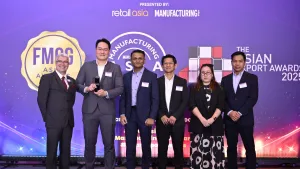
China boosts photonic chip production in bid to overtake Western rivals
China has been been investing in alternative chip materials and architectures since the late 2010s, including photonic chips.
China is poised to lead production of photonic chips, which has the potential to position it ahead of its Western rivals, a report said.
"If these chips fulfill their promise, they can be useful for both quantum computing and AI data centres, two key strategic priorities that are at the centre of global power competition with the United States currently," the Mercator Institute for China Studies (MERICS) said.
China has been been investing in alternative chip materials and architectures since the late 2010s, including photonic chips. Other countries have also started pursuit as the physical limits of silicon-based chips emerge.
In June 2025, the Shanghai Jiao Tong University Chip Hub for Integrated Photonics (CHIPX) completed world’s first thin-film lithium niobate (TFLN) photonic chip production line.
“As China lags behind in traditional, silicon-based chips, the country is identifying technologies to leapfrog,” said Antonia Hmaidi, senior analyst at MERICS.
“Photonic chips fit the bill, because they promise to be useful for critical technologies like AI and quantum computing, and because they build on China’s strengths in fibre-optics and laser technologies.”
Whilst CHIPX is currently a research facility, it has an annual capacity to produce 12,000 six-inch wafers, surpassing similar lines in Europe, the institute said.
These chips can be produced using older machinery to avoid dependence on extreme ultraviolet (EUV) lithography machines, which China cannot import due to Western export bans. The production method also draws on technologies used in fibre-optic cables and lasers, areas where China already has strong industrial capacity, MERICS added.
Photonic chips are seen as a potential solution to the performance limits of silicon, offering higher speed and energy efficiency for powering AI data centres and quantum computers.
Europe has also invested in this emerging field. Belgian start-up Thema Foundries plans to convert its final gallium nitride chip facility into a photonic chip lab, whilst the Netherlands is developing a pilot production line for integrated photonics.
Whilst Western companies such as Intel have struggled to commercialise photonic technology, Beijing’s coordinated industrial policy could give China a first-mover advantage, MERICS said.















